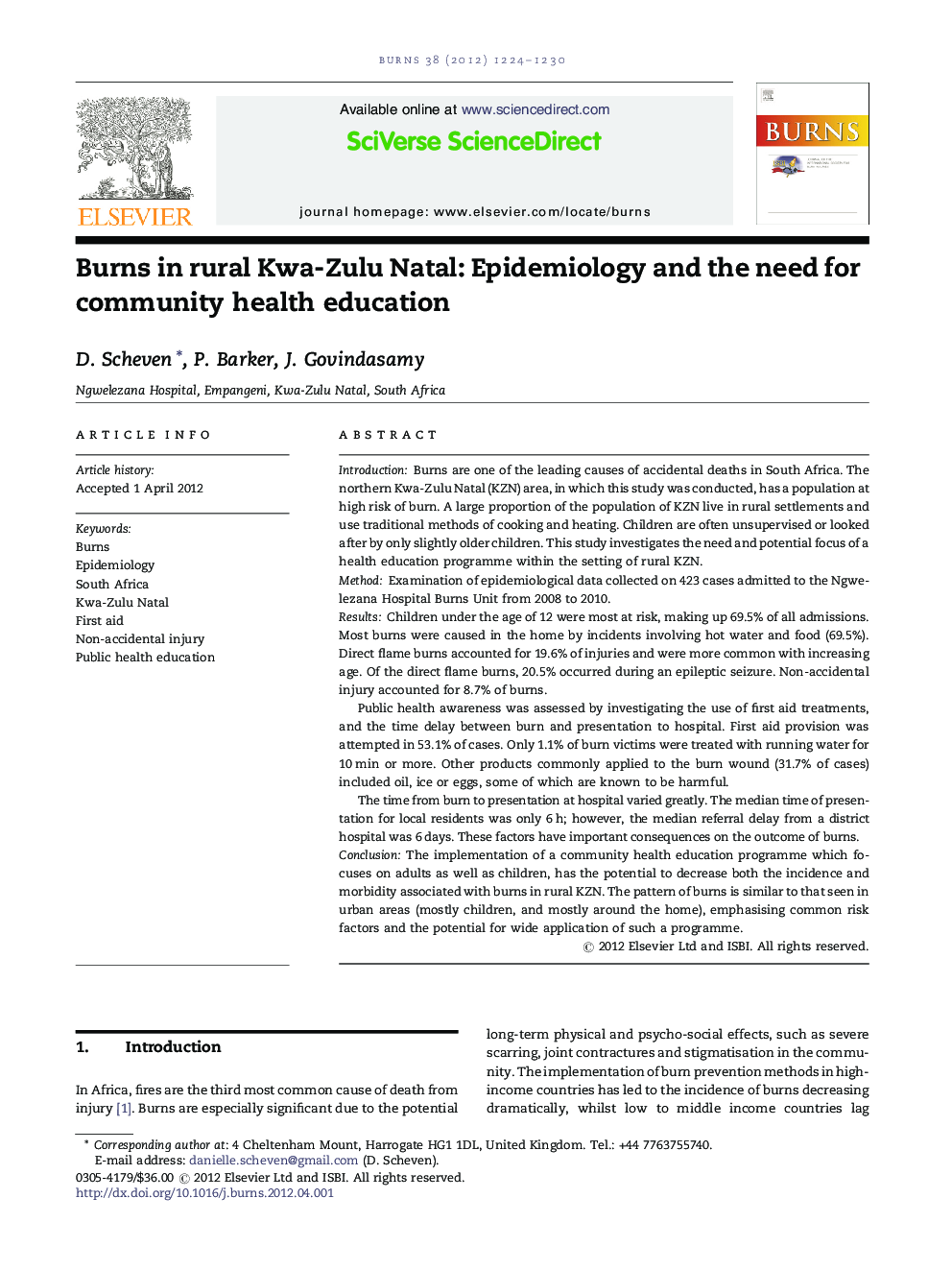| کد مقاله | کد نشریه | سال انتشار | مقاله انگلیسی | نسخه تمام متن |
|---|---|---|---|---|
| 3105175 | 1191674 | 2012 | 7 صفحه PDF | دانلود رایگان |

IntroductionBurns are one of the leading causes of accidental deaths in South Africa. The northern Kwa-Zulu Natal (KZN) area, in which this study was conducted, has a population at high risk of burn. A large proportion of the population of KZN live in rural settlements and use traditional methods of cooking and heating. Children are often unsupervised or looked after by only slightly older children. This study investigates the need and potential focus of a health education programme within the setting of rural KZN.MethodExamination of epidemiological data collected on 423 cases admitted to the Ngwelezana Hospital Burns Unit from 2008 to 2010.ResultsChildren under the age of 12 were most at risk, making up 69.5% of all admissions. Most burns were caused in the home by incidents involving hot water and food (69.5%). Direct flame burns accounted for 19.6% of injuries and were more common with increasing age. Of the direct flame burns, 20.5% occurred during an epileptic seizure. Non-accidental injury accounted for 8.7% of burns.Public health awareness was assessed by investigating the use of first aid treatments, and the time delay between burn and presentation to hospital. First aid provision was attempted in 53.1% of cases. Only 1.1% of burn victims were treated with running water for 10 min or more. Other products commonly applied to the burn wound (31.7% of cases) included oil, ice or eggs, some of which are known to be harmful.The time from burn to presentation at hospital varied greatly. The median time of presentation for local residents was only 6 h; however, the median referral delay from a district hospital was 6 days. These factors have important consequences on the outcome of burns.ConclusionThe implementation of a community health education programme which focuses on adults as well as children, has the potential to decrease both the incidence and morbidity associated with burns in rural KZN. The pattern of burns is similar to that seen in urban areas (mostly children, and mostly around the home), emphasising common risk factors and the potential for wide application of such a programme.
Journal: Burns - Volume 38, Issue 8, December 2012, Pages 1224–1230